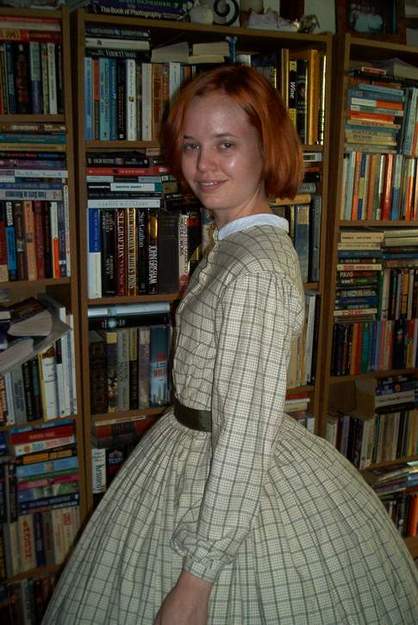
My 1863 day dress. Why 1863? The shoulder seam is only slightly dropped. I have an 1863 Godey's fashion plate with the shoulder seam in the same position as mine.
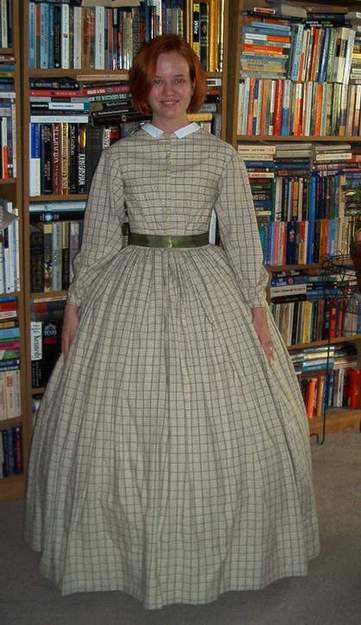
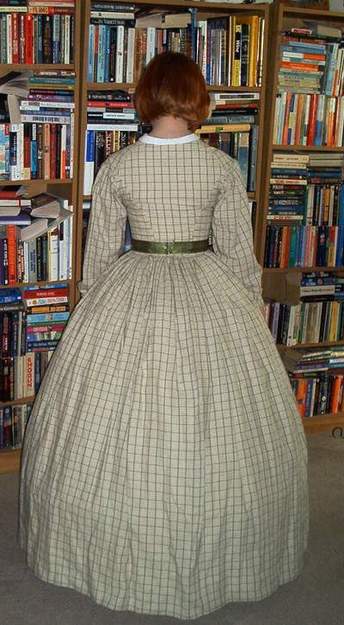
The dress from the front and the back. The bodice is gathered to fit, not darted, as was common for cotton dresses. The lining is still darted. I used the Truly Victorian 1859 Pagoda bodice for my base. I needed to make a few changes. I dropped the shoulder seam more since it was high in the pattern and I only flatlined the bodice. I switched the pagoda sleeves for bishop sleeves that I drafted from Elizabeth Stewart Clark's Dressmaker's Guide. The bodice and skirt are both attached to a waistband. The belt is green satin ribbon. I probably should have switched to a one piece back, but didn't. The hem is faced with cotton organdy, the bodice lined with cotton sateen. The hoop is probably a little wide for this style dress, but I don't have a narrower one, so it will have to do for now. I think it's pretty anyway :)
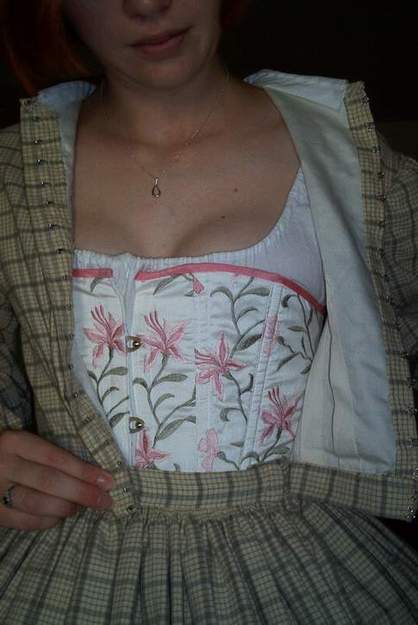
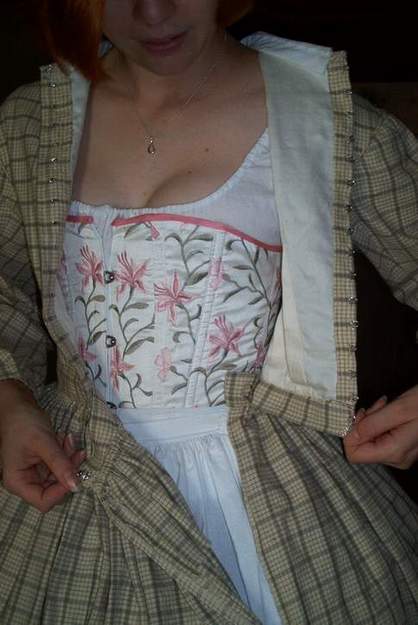
Pictures of the dogleg closure. Dresses from the 1860s usually had closures up the front of the bodice and down the left front of the skirt. The skirt is attached directly to the bodice and a false waistband is attached starting near the outer dart. I sewed the skirt to both the waistband and bottom of the bodice until I reached the placket, then just sewed the skirt to the waistband (this is visible in the picture on the left). The overlap on the skirt faces back, so I made a tiny waistband (shown in the picture on the right) to close the skirt. The bodice then hooks over the false waistband. It took quite a bit of work to get this right, but it works quite nicely. Once again, I used the instructions in the Dressmaker's Guide. I still had to play around with it though :) I wish I had thought to look in Nancy Bradfield's Costume in Detail BEFORE I did this, because she has an excellent picture of a dogleg closure like this on page 211. There are also several examples where the bodice waistband is extended, which probably would have been easier :)
You can see the hoop waistband and the petticoat waistband in the picture on the right. These are both slightly lower than the dress waistband so add to the illusion of a small waist.

